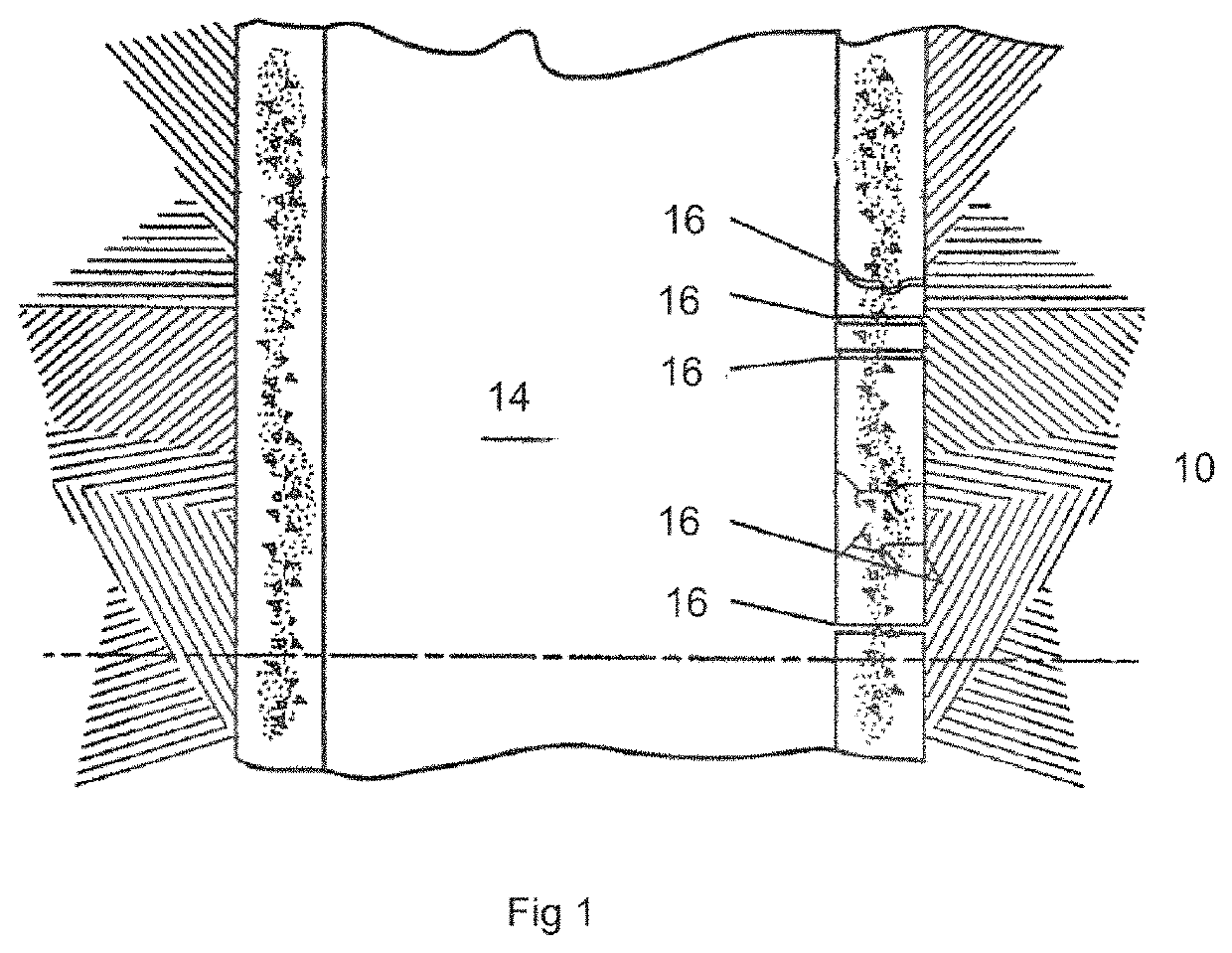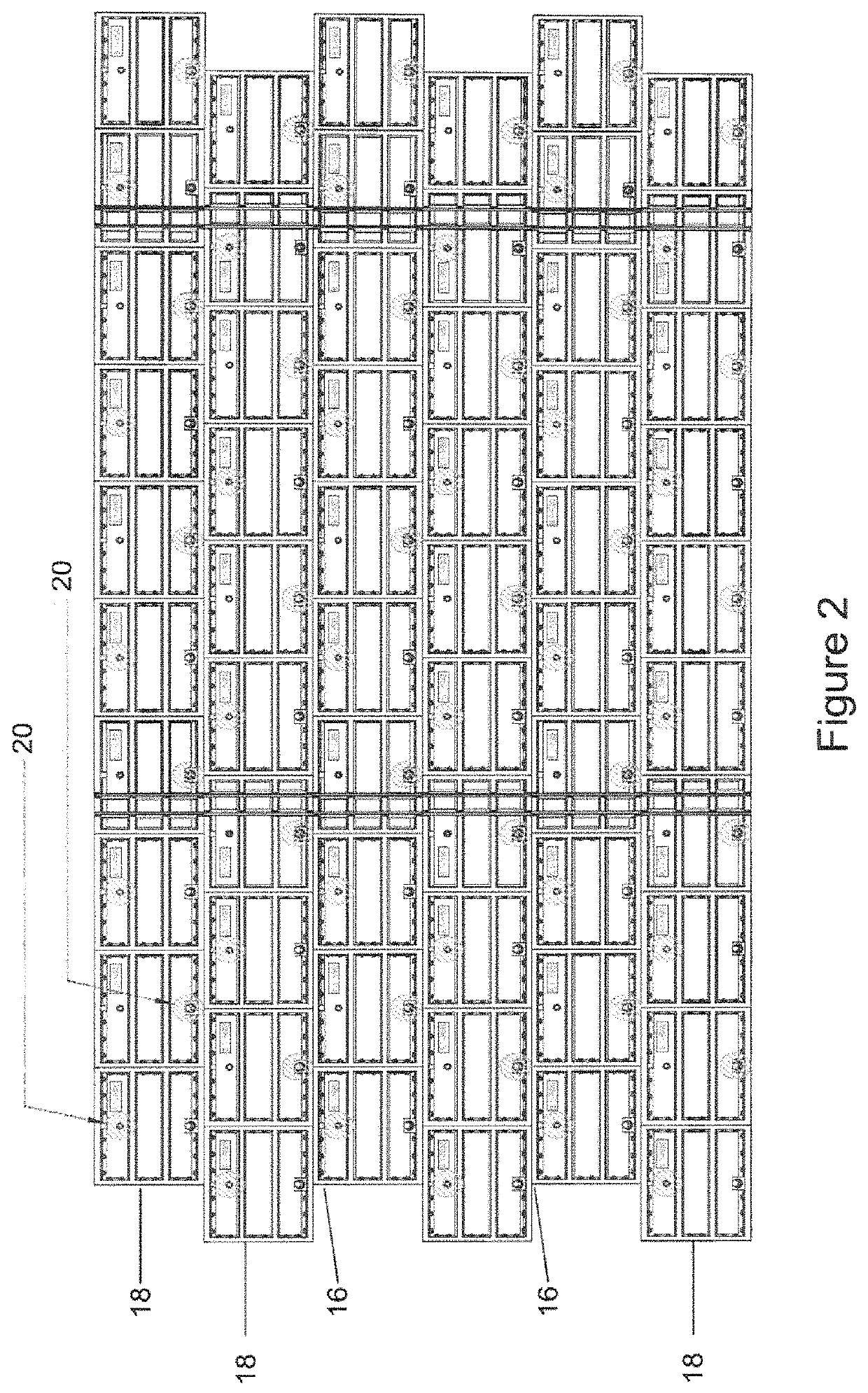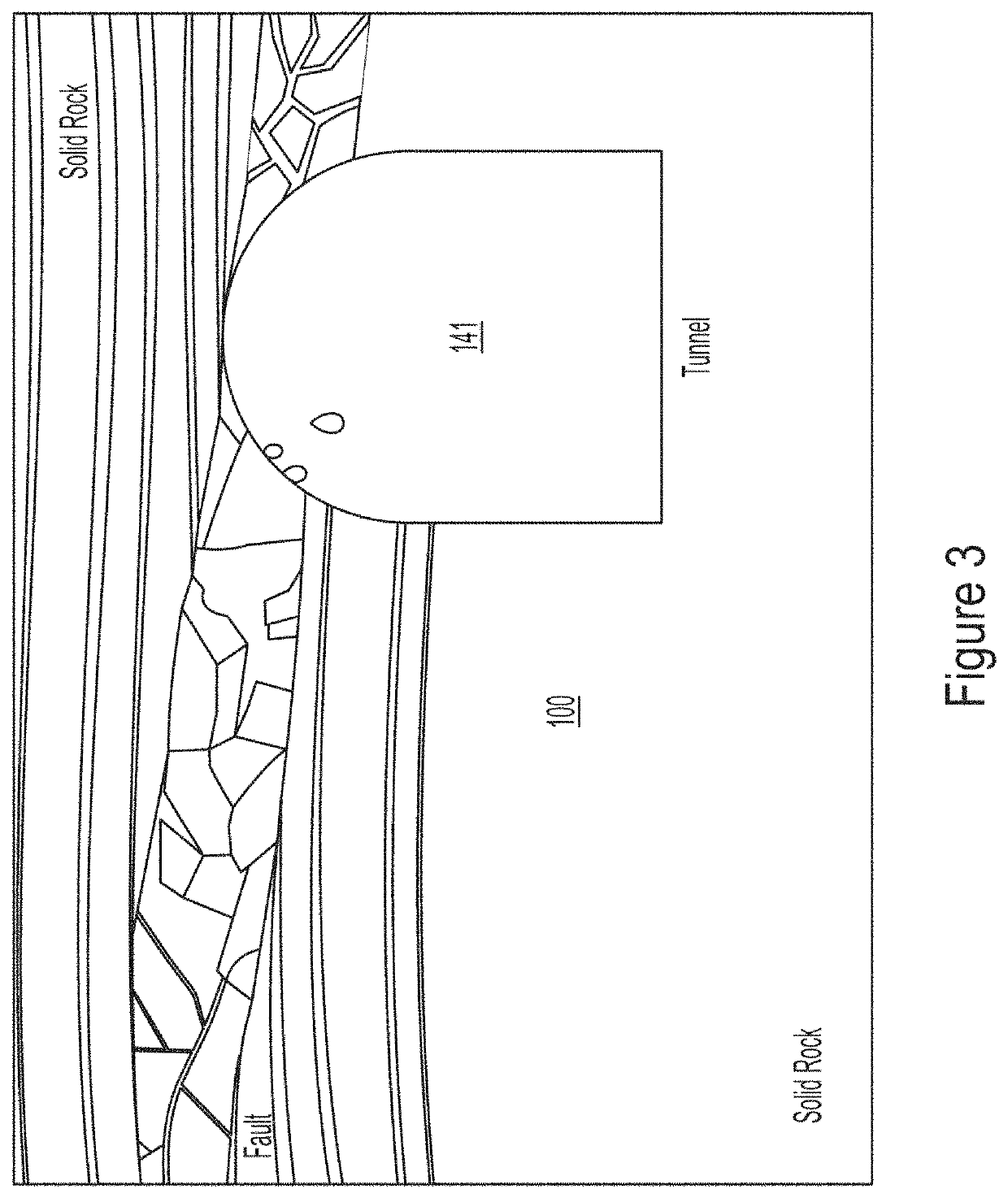Method of limiting permeability of a matrix to limit liquid and/or gas inflow
a technology of permeability and matrix, applied in the direction of drilling composition, chemistry apparatus and processes, foundation engineering, etc., can solve the problems of preventing or reducing, hydrofracturing if applied to an unconsolidated matrix, and leaving sections of unconsolidated matrix on either side of the created seams
- Summary
- Abstract
- Description
- Claims
- Application Information
AI Technical Summary
Benefits of technology
Problems solved by technology
Method used
Image
Examples
Embodiment Construction
[0042]The present invention may be better understood from the following description of preferred embodiments and examples and with reference to the accompanying drawings, in which:
[0043]FIG. 1 is a cross-sectional view of a geological body, containing a shaft having cracks or apertures in the matrix surrounding the shaft that requires sealing to prevent or minimise water inflow into the shaft;
[0044]FIG. 2 is a front view of a section of a series of tubbing rings lining a shaft sunk into a matrix requiring treatment to limit water inflow into the shaft;
[0045]FIG. 3 is a cross-sectional view of a geological body with a mine shaft excavated therein and requiring treatment to limit water inflow, prior to any treatment;
[0046]FIG. 4 is a cross-sectional view of the geological body of FIG. 3 being treated to limit water inflow into the mine shaft in accordance with the present invention;
[0047]FIG. 5 is a cross-sectional view of the geological body of FIG. 3, wherein a first further additiv...
PUM
| Property | Measurement | Unit |
|---|---|---|
| particle size | aaaaa | aaaaa |
| particle size | aaaaa | aaaaa |
| particle size | aaaaa | aaaaa |
Abstract
Description
Claims
Application Information
 Login to View More
Login to View More - R&D
- Intellectual Property
- Life Sciences
- Materials
- Tech Scout
- Unparalleled Data Quality
- Higher Quality Content
- 60% Fewer Hallucinations
Browse by: Latest US Patents, China's latest patents, Technical Efficacy Thesaurus, Application Domain, Technology Topic, Popular Technical Reports.
© 2025 PatSnap. All rights reserved.Legal|Privacy policy|Modern Slavery Act Transparency Statement|Sitemap|About US| Contact US: help@patsnap.com



